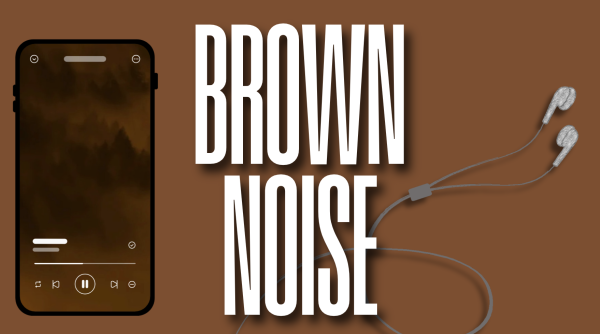Mac Miller’s Posthumous Album “Faces” is a Celebration of His Life

“Faces,” which was released on Oct. 15, is Mac Miller’s second posthumous album. (Courtesy of Twitter)
On Oct. 15, Mac Miller’s most recent album, “Faces,” was released on all streaming platforms as his second posthumous album. This release and Miller’s other successful posthumous album, “Circles,” spurred discussion over posthumous albums’ purposes and abilities to honor late musical artists.
Many posthumous albums have been released recently, following the untimely deaths of artists like Pop Smoke, XXXTENTACION, Lil Peep and Juice WRLD. There have been conflicting opinions about posthumous albums, as some argue the albums feel unfinished. Miles Davis’ posthumous album, “Doo-Bop,” produced by Easy Mo Bee, was ridiculed for having “a slapped together, disconnected feeling” by Time Magazine.
However, some albums have been praised for honoring the late artists and creating a bookend to their musical careers. Tupac and Notorious B.I.G.’s posthumous albums were perfect memorializations of artistry that was lost too soon. However, these artists had completed most of the albums before their deaths, whereas much of “Doo-Bop” was a collection of unfinished samples that had to be spliced together, resulting in the loss of the artist’s original sound. Pop Smoke’s album “Shoot For the Stars, Aim For the Moon” was a collection of samples and clips woven into songs with gaps filled by other featured artists. Some fans felt these samples stayed true to Pop Smoke’s own raw sounds, but others felt that some of the featured artists took away from the authenticity of the album. Juice WRLD, on the other hand, is rumored to have thousands of unreleased songs, making it easier to produce posthumous albums that stay true to the artist’s original sound and vision.
In 2020, Mac Miller’s team released “Circles,” his first posthumous album.. This album was part of the plan for a trilogy that started with the 2018 album “Swimming,” before Miller’s drug overdose in 2018. Miller had many projects in progress before his death, making it easier for producers to piece together samples and even full songs. This explains the complete and genuine nature of both “Circles” and “Faces.”
“Faces” is a re-release of Miller’s exclusive 2014 mixtape of the same name. The 2021 album has 25 songs with features including Earl Sweatshirt, Vince Staples and ScHoolboy Q. To access the original 2014 mixtape, fans had to make Miller a virtual sandwich through an app and would receive a download link in return. Miller described the project as representative of his childhood creativity, comparing himself writing the songs to Harold from the book “Harold and the Purple Crayon.”
Songs from the album also allude to previous songs and albums throughout his career. “Colors and Shapes” is described as “prehistoric ‘Swimming,’” featuring similar themes of feeling broken. Rolling Stone describes “Swimming” as Mac Miller’s fight to “keep his head above water,” which links to the song from “Faces.” The lyrics of “Colors and Shapes” feature a scene where Miller is having a conversation with a captain of a sinking ship: “All of his passengers escaped to safety / But he was not done with his trip / He looked up and smiled, asked me, How do you do? / I told him, I’m losin’ my grip / He told me, Son, if you want to hold onto yourself / Then let yourself slip.” The song also features a similar lilting, soft beat behind a softer rap style that appears in “Swimming.”
“Ave Maria” covers similar themes to those in “Circles,” Miller’s first posthumous album. In “Circles,” Miller addresses his battles with feelings of anxiety and sadness that were mentioned in “Swimming” but provides a more optimistic tone, alluding to his journey in recovery. A lyric in “Ave Maria” references his improvement in relation to the theme of the “Swimming” album: “I’m not drownin’ / I’m wadin’ in the water.”
“Apparition” features similar beats to those found in Miller’s 2015 album, “GO:OD AM.” This song features similar jazzy samples of horns and harder drum beats. The song also referenced similar themes of drugs that “GO:OD AM” did in a dark-humor tone that fans gravitated towards.
“Faces” acts as a culmination of Mac Miller’s career, family, friends and inspirations throughout his life. It covers darker themes of drugs and death that also appear in his other albums, and love and trust, largely covered in “The Divine Feminine.” It features his signature creative and playful beats from many different styles of music and different cities. It also highlights his personal, raw stream-of-consciousness style of rapping that many fans feel connected to.
This album acts as a neat closure to Miller’s career and a way to immortalize his impact on music and his fans. Mac Miller’s website released a statement on the same day of the album release saying: “It feels like a time capsule. A lot of good moments to remember, thank God. The summer after Malcolm released this was like summer camp.” “Faces” is a way to remember Miller through a long-standing project that he was very passionate about. The re-release of the mixtape encompasses his career and life and shows his growth as an artist over time. The statement continues: “Also, you, dear friend, have full permission to use the cover for your tattoo, to print and hang stuff from the folder on your walls/ceilings, to dance, and to share this stuff with friends … it’s supposed to be just for fun.” The album acts as a celebration of life for Miller, and his team encourages fans to enjoy the music and art in tribute to Miller.
“Faces” is a final representation of Mac Miller as a person, where friends and family can hear him once again: “We did our best to keep it as close to [the original mixtape] as possible. … Took a minute, but I was able to hear this again. It’s so good. And it’s him. Everything, all together, all at once.”












































































































































































































